

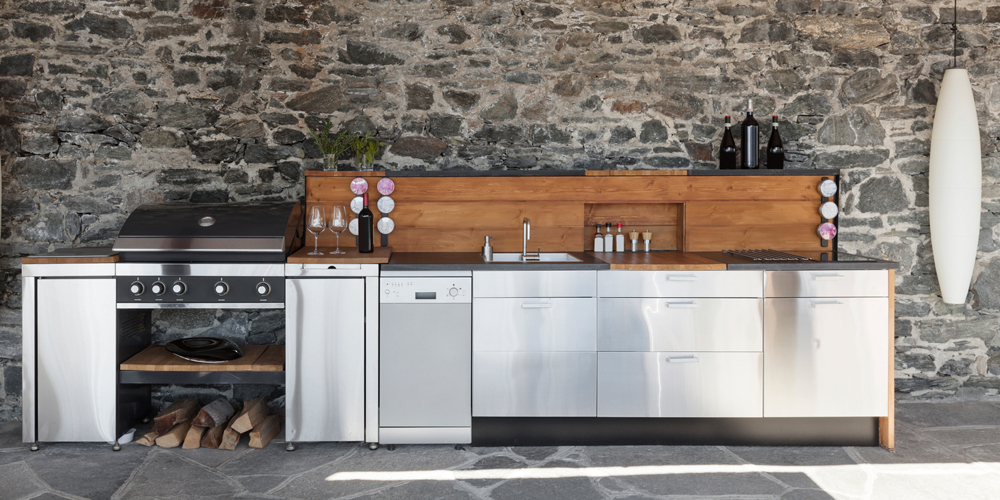
True outdoor living incorporates all the comforts of indoor living, and the addition of a patio grill can turn your backyard into a versatile outdoor kitchen space. Enjoy cooking outdoors with a BBQ grill which allows you to grill a tasty meal with unrivaled taste that can't be achieved indoors. With advanced kitchen technology and state-of-the-art engineering, today’s outdoor grills make it possible to grill outdoors. Read on to learn more about choosing the right grill for your lifestyle and outdoor space.
The type of fuel customers elect to power their grill is the chief factor in purchasing a grill.

Gas-fueled grills are another popular option for outdoor grills. Liquid propane produces a clean-burning flame, which creates a pure flame that won’t create the distinctive char-grill, smoky taste produced by charcoal grills. Typical models display a design that features a grill cart with wheels which houses both the grill unit and the fuel source, or propane tank. Other attachments, such as side burners or side tables, may be added according to preference.
Pros
Controls mean an easy set-up that produces even heating and quick warm-up time
Efficient and easy to clean
Produces odorless fumes and flame
Cons
Grease buildups can occur with potential for flare-ups
Can achieve high cooking temperatures that reach up to 450 degrees
Fuel tanks need to be replaced regularly when fuel runs out
Does not produce a smoky taste

Natural gas grills differ from propane fueled grills because they require permanent installation with a natural gas line, eliminating the use and replacement of propane tanks. Built-in grills require natural gas installation because of their permanent location. Natural gas produces a clean-burning heat.
Pros
Fuel never needs to be replenished or replaced
Initial installation can prove expensive, but over time is more cost-effective
Easy to clean
Cons
Installation proves more expensive than other fuel options
Not portable
Smoky flavor cannot be achieved easily
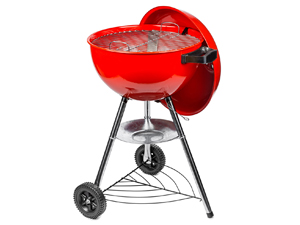
Charcoal grills are a classic, traditional option for outdoor barbequing. The most common type of charcoal grill features a kettle shape bowl and a wire rack that is balanced on top of the cavity. The kettle shape bowl holds the charcoal within the charcoal pan. Charcoal grill models can vary in aesthetic and features. Charcoals grills are available in anumber of different shapes, from round to rectangular, to different-sized leg supports and lids.
Pros
Economical, easy to move
Can achieve high cooking temperatures ranging from 500-700 degrees
Adds a distinct smoky flavor unlike propane and natural gas grill models
Cons
Can take 15-20 minutes to properly heat for grilling
No control features mean an uneven heat for grilling
Cleanup is more difficult with ash and reside build-up
Not certified for balcony use
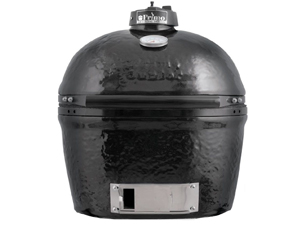
A different option for outdoor cooking includes smoking, which creates the same smoky flavor achieved by charcoal grilling. A smoker uses low and indirect heat to slowly cook food via smoke. These vertical standing units house hooks or multiple grates where food can hung or stored while slowly cooking within the unit.
Pros
Different grilling, smoking is a mild cooking method
Produces a distinct, smoky flavor
Cons
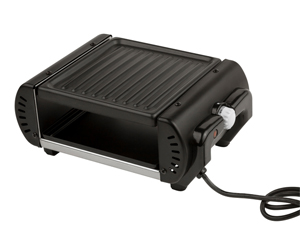
Electrically powered grills use a heating element that is powered by electricity to effectively heat and cook food. Electric grills typically plug into a standard wall outlet which make them ideal and in settings with fire and safety regulations such as apartment balconies.
Pros
Heat can be controlled and adjusted easily
Even distribution of heat
Approved for indoor use or confined spaces (take special precautions)
Cons
Will not reach extremely high temperatures
Lover overall temperature compared to other grill types
Does not achieve smoky flavor
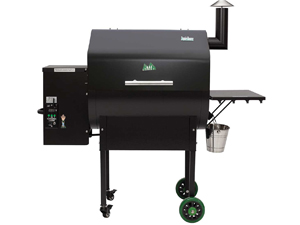
A grill fueled by wood pellets is best described as a hybrid between charcoal and gas-powered grills. Wood pellet grills use a convection cooking process to thoroughly cook food. A wood pellet grill uses an induction fan to circulate air from the surrounding area. This produces heat which warms up specially engineered wood pellets that produce smoke.
Pros
Even cooking temperatures
Smoky flavor
Grill power is measured by the output of heat production the unit produces. The measurement is measured in BTUs (British thermal units). In general, the larger the grilling unit, the more BTUs are required to power the grill, while smaller grills will require less power. Higher BTUs will benefit those who are grilling for large groups of people, or cooking a large quantity of food. Be sure to compare the number of BTUs and features before deciding how much fuel power is required for your needs.
Determining the appropriate size grill for your outdoor space will ultimately come down to how large and how often you grill outdoors. Consider your own cooking habits in order to determine the ideal size grill for your needs. Grill size is typically measured by two factors:
1) the area of space the grill unit occupies
2) the cooking surface area
Primary Square Inches
Primary square inches refers to the measurements of the direct surface over the principal heating element that withstands full temperature cooking.
Secondary Square Inches
Secondary square inches refers to the measurements of additional cooking surfaces, such as side burners and elevated warming grates.
Considering Number of People
When grilling for large groups, a large grill will prove more convenient than grilling with two small grills. Always consider the average number of people you will be grilling for. If you are using a large grill infrequently, consuming fuel too fast will prove troublesome.
Stainless steel grills are the standard material used in most grill constructions. However, grills can be constructed in a number of materials that display proper heat conduction that can withstand high cooking and grilling temperatures. Cast iron, cast aluminum, and ceramic are other materials that are used to construct grills.
The amount of heat can be controlled via burners while grilling.
For foods that do not require direct heat, side burners provide an extra surface for cooking and a lower temperature perfect for grilling vegetables.
Infrared burners achieve extremely high levels of heat for quick searing. Gas-fueled grills, like propane and natural gas grills, can be equipped with infrared burners.
Typically constructed from porcelain enamel or stainless steel for easy clean up and ideal heat retention, grates provide the necessary surface in order to grill food.
A button enables users to quickly ignite grill units without the difficulty and time used with lighter fluid. It is also a better choice for safety.
Rotisseries are useful when cooking bulky, large foods such as whole poultry. A rotisserie evenly cooks food white rotating.
Thermometers are essential in determining the internal temperature of your grill unit.
To prevent safety hazards, allow for at least 10-feet clearance away from combustible materials and structures.
Set up a grill in a well-ventilated, open area.
Never use a charcoal grill within a confined space such as a balcony.
Make sure that your grill is properly stabilized on the ground to prevent tipping.
Line kettle basins with aluminum to prevent added wear and corrosion from heated coal
Coal can be easily discarded when housed when the kettle is lined with aluminum wrapping.
Reguarly clean ash and any buildup to maintain the grilling quality and performance of a charcoal grill.
In order for liquid to expand properly, it is federally required that a 20-pound cylinder of propane be filled to 80% capacity.
Make sure that open flames are distinguished before checking for potential gas leaks.
When igniting a gas grill, always keep the grill lid open.
Never disconnect a cylinder while the grill is still in use.
Faulty hoses should always be replaced.
The best time for cleanup is while grates are still warm to prevent debris from adhering to cooking surfaces.
If debris and residue is still found, you can preheat a grill between 500-550 degrees to burn into ash. A bristle brush can then be applied to remove the ash.
An abrasive brush used in conjunction with dishwash solution can be used for for a deeper clean of your grill.



